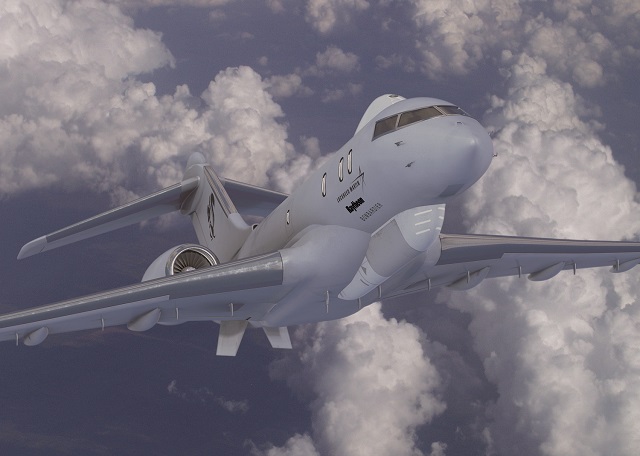Dovetailing on Northrop Grumman’s teaming announcement this week, Lockheed Martin has revealed that it is partnering with Raytheon and Bombardier to offer an “ultra-long range” Global Express-based joint surveillance target attack radar system (JSTARS) aircraft to the US Air Force.
The air force is looking to replace its 16 Northrop E-8C JSTARS ground-looking surveillance and battle management airplanes with a smaller, business class platform that is cheaper to operate and maintain. The air force recapitalization programme seeks an almost one-for-one replacement – 17 jets.

A conceptual image of Lockheed's proposed JSTARS business jet platform
Lockheed Martin
Northrop has teamed with L-3 Aerospace Systems and General Dynamics to offer a Gulfstrea business jet-based proposal. Boeing is offering its 737-700.
LM’s advanced development programmes unit Skunk Works is drawing up the company’s JSTARS proposal. The air force says it will fund three teams initially to mature their competing designs before picking a winner some time in 2017.
Skunk Works VP and general manager Rob Weiss said Lockheed’s experience in systems integration and open mission systems prepares it well to offer the “best possible solution” to the air force.
Bombardier vice president of specialised aircraft Stéphane Villeneuve says the company is well positioned to support the JSTARS programme, having delivered the civil BD-700 aircraft that is the basis for the USAF E-11A “battlefield airborne communications node” type.
Raytheon brings its airborne radar and mission systems integration experience to the team. “We are committed to building modular, easily adapted and upgraded open systems to help our warfighters stay ahead of future threats,” says Rick Yuse, president of Raytheon Space and Airborne Systems.
The air force intends to spend upwards of $1.3 billion on JSTARS development through 2020.
Source: Flight International



















